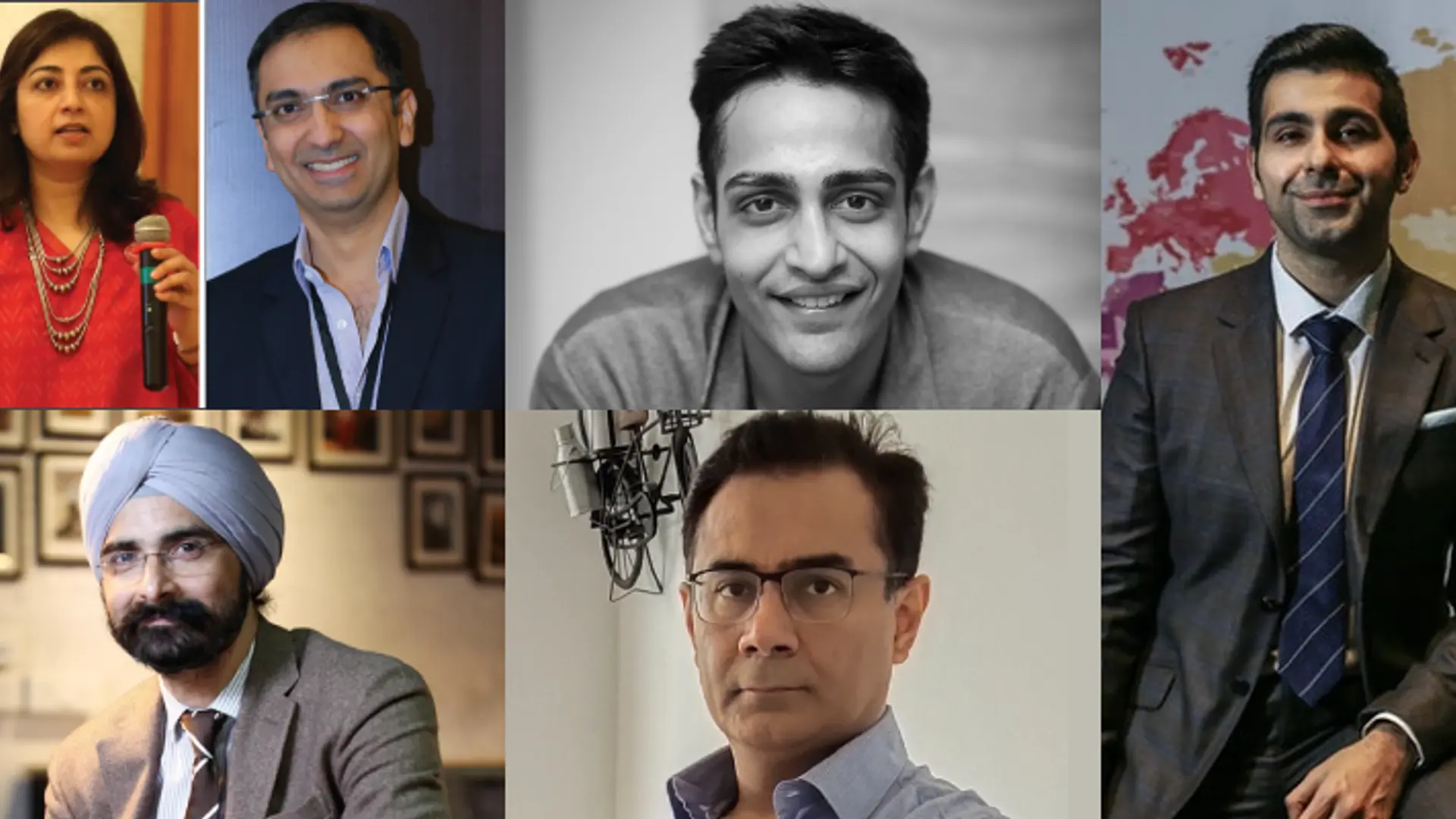COVID-19: With Rs 861 Cr AUM, this lending platform is looking to revive MSME sector and bridge funding gap
Mumbai-based lending platform U GRO Capital lends to MSMEs through a four-pronged distribution model, and is digitising its lending process in the wake of COVID-19. Formerly known as Chokhani Securities, U GRO is a BSE-listed NBFC established in 1993.
With the COVID-19 pandemic and lockdown crippling India’s MSME sector, it is now imperative to revive the segment responsible for being the second-largest employer after agriculture, generating around 30 percent of India’s GDP.
In an interaction with SMBStory, Shachindra Nath (49), Executive Chairman and Managing Director of Mumbai-based NBFC , says,
“As times still remain uncertain, a sizable number of MSMEs are struggling to survive. With inadequate funding, NBFC players like us have a significant role to play in the sector’s revival. NBFCs possess the ability to customise their funding process. With technology and innovation at the core, we bridge the lending gap faced by MSMEs.”
U GRO Capital, formerly known as Chokhani Securities, is a BSE-listed NBFC established in 1993. The birth of U GRO Capital happened after Shachindra acquired Chokhani Securities, and revamped its management team in December 2017.

U GRO Capital executive chairman and managing director Shachindra Nath
The lending platform finances MSMEs through a four-pronged distribution model, which comprises a traditional branch-led channel, a BFSI channel, an invoice discounting and ecosystem financing channel, and a direct-to-consumer digital channel. As on March 31, 2020, U GRO Capital’s Assets Under Management (AUM) was Rs 861 crore, it claims.
In an exclusive interview with SMBStory, Shachindra describes how U GRO functions, and explains how such NBFCs play a crucial role in the sector’s revival.
Edited excerpts from the interview:
SMBStory [SMBS]: Why was there a need to start a company like U GRO?
Shachindra Nath [SN]: A vast majority of Indian MSMEs do not have access to formal credit despite the MSME segment contributing over 30 percent to India’s GDP. We built U GRO Capital to solve this credit gap by using our deep sectoral knowledge to build products optimised to MSMEs’ needs.
We also leveraged a technology-driven underwriting process for a comprehensive assessment of MSMEs, as it was critical to cater to thin-file customers and also to achieve scale, and enabling watertight corporate governance to eliminate the possibility of egregious breaches in other market players.
As NBFCs are generally more nimble and able to specialise than banks, they are ideal for lending to the MSME segment, where a high degree of specialisation is needed for good underwriting.
SMBS: How was U GRO started? How did you build the technology for the platform?
SN: U GRO was started with a buyout of Chokhani Securities, followed by its capitalisation and rebranding, along with a new management team and business model. We made the technology architecture by building internal core processing platforms – Loan Origination System (LOS) and Loan Management System (LMS).
Post this, our focus has been on developing and fine-tuning of tech modules for facilitation of each of our four distribution channels.
SMBS: How do your distribution channels work?
SN: Our traditional branch-led channel named GRO+ involves sourcing secured and unsecured business loans through GRO-partners. GRO Xstream — our BFSI channel — involves sourcing through smaller partner NBFCs or co-lending tie-ups with larger financial institutions like banks or even direct assignments.
Through GRO Chain, our invoice discounting and ecosystem financing channel, we provide vendors, dealers, and distributors of our partner anchor corporations with supply chain financing invoice collateral. And finally, our direct-to-consumer digital channel sees SMEs directly apply for financing through our website or fintech partnerships.
SMBS: What is your business model?
SN: The core revenue model is raising liability at low rates, and disbursing loans at higher rates, thus earning spreads. Riskier segments will have larger spreads, but this is counteracted by higher rates of bad loans. The fee-based income comes from upstream co-lending and other assignments, whereas additional revenue falls is sourced by cross-selling.
SMBS: How are NBFCs like U GRO helping revive the MSME sector?
SN: We had seen that traditionally, the lending process was time-consuming and involved a lot of documentation, personal visits, and physical inspection. However, backed by government initiatives, NBFCs have leveraged technology to digitise most, if not all, of these processes, making it convenient for small businesses to avail funds.
This helps them stay afloat in these trying times. That being said, the period of lockdown was not seen by us as a period of inactivity, but an opportunity to reflect, introspect, and work towards enhancing our strategic fronts.
This involved reviewing existing processes, using technology to digitise the processes and render them contactless, and to be able to address MSME needs remotely in line with the new normal.
SMBS: How are you leveraging technology to enable digital infrastructure for seamless lending amidst the COVID-19 pandemic?
SN: We identified that the asset-side goalposts have been pushed back, paving way for the strategic improvements. This involved reviewing our existing processes and proper utilisation of the technology to cater adequately to the changing landscape and requirements.
The output was the replacement of prior physical processes by more convenient digitised versions, through inception of video KYC, digital/e-signatures, and digitisation of the significant process of personal discussion, to enable seamless digital disbursals.
On that note, we recently launched a programme called ‘Sanjeevani,’ which offers an end-to-end digital journey to the customers. Its algorithm-driven predictive risk tools accelerate instant loans — both secured and unsecured — up to Rs 2 crore so that businesses can restart, and the economy can recover from a three-month hiatus.
SMBS: What is the scope of government measures in facilitating the support and recovery of MSMEs?
SN: The Indian government has been striving towards supporting small businesses, given its aspiration of MSMEs contributing around 50 percent of the Indian GDP by 2024. It finds a scope in working towards the liquidity stress created by multiple circumstances.
It has been doing so by announcing various packages for the revival of MSMEs, and bringing back growth in the sector. Additionally, the government introduced the Indian digital lending infrastructure India Stack to simplify the lending process.
That being said, it needs to ensure the transmission of those benefits to the affected segments. For the MSME space, this can most efficiently be facilitated by NBFCs with digital underwriting. In my opinion, the government should also give a 100 percent guarantee to NBFCs who lend specifically to MSMEs.
This will ensure that the NBFCs get sufficient liquidity from banks to then pass it on to the end beneficiaries (MSMEs) to help them sustain their businesses, and eventually drive economic recovery.
SMBS: What are your disbursal plans by December 2020, and overall business outlook post-COVID-19?
SN: Looking at the current scenario, the first half of FY2021 is expected to see reduced disbursements by NBFCs to maintain liquidity and asset quality, and the collections will also be affected.
To address the liquidity stress, more NBFCs should explore the originate-to-sell model, and move beyond the borrow-and-lend model. Well-run firms will utilise the current opportunities to increase their profile and set the foundations for future growth.
While an immediate impact was felt due to the pandemic on our asset side goals, we have been able to make strategic improvements to our processes. While it is not possible to predict the trajectory of the pandemic, assuming a gradual remission, we can positively expect to be normalised by the end of FY21.
For lending in post-COVID-19 times, we are focussing on our loan programme Sanjeevani. As we continuously strive towards enhancing our self-sufficiency, we are looking to reach out to five lakh MSME clients.
Edited by Suman Singh








